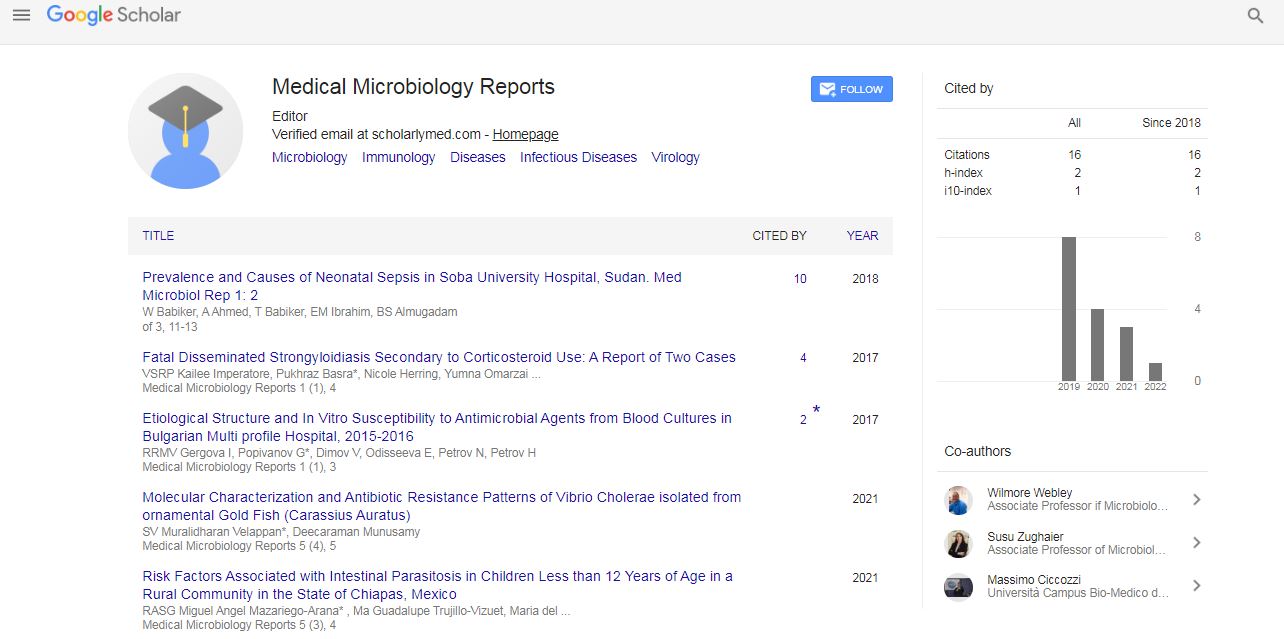Prevalence of Campylobacter and AMR
Lindita Molla, Elton Molla, Aida Demo, Fatbardha Sina and Silvana Mardhaja
Insititute of Public Health, Albania
European University in Tirana, Albania
: Med Microbiol Rep
Abstract
The development and spread of antimicrobial resistance (AMR) is a public health concern worldwide. It is a complex issue driven by a variety of interconnected factors enabling microorganisms to withstand antimicrobial treatments to which they were once susceptible to. The use of antibiotics is important in treating infections and preventing disease from arising in both animals and humans. The transmission of AMR microorganisms through the food chain is thought to be one of the routes by which people are exposed to AMR bacteria. However, there is uncertainty around the contribution food makes to the problem of AMR in human infections. There is a continued need to monitor the prevalence and types of AMR bacteria in retail chicken and other foods to inform a baseline and also the risk to public health. Many countries have implemented prudent antibiotic use policies and surveillance systems both in clinical and veterinary settings, such systems have not been implemented in Albania at this point of time and little is known about the levels of antibiotic-resistant bacteria in food animals within the country. Methods This report forms part of the project: A Microbiological Survey of Campylobacter Contamination in broiler chicken (2015), and presents antimicrobial resistance data for a subset of those Campylobacter isolates collected as part of this survey. We tested the antimicrobial susceptibility of Campylobacter isolates using the disc-diffusion method with commercial discs (Hi Media) containing erythromycin (15 μg disc load), tetracycline (30 μg disc load), and ciprofloxacin (5 μg disc load), as per the protocol of the European Committee on Antimicrobial Susceptibility Testing (EUCAST) A total of 200 poultry samples were taken from different poultry breeding complexes of Albania over a 1 year (2015) period and were tested for the presence of Campylobacter and AMR. Results Of the 90 Campylobacter isolates (28% were Campylobacter jejuni and 20 Campylobacter coli). The SAT showed that the Resistance rates of Campylobacter isolates were, very high. The results showed that 81 % of the isolates were resistance from Eritromicine, 52.7% resistance from Tetracycline and 21% resistance from Ciprofloxacine. In conclusion, these data indicate that Campylobacter isolates from Albanian farms exhibit high to extremely high levels of antibiotic resistance; Campylobacter isolates exhibit resistance to multiple antibiotics and multidrug resistance profiles are geographically widespread. Implementation of prudent antibiotic use policies in food animals and related surveillance will be necessary to reduce the emergence, spread and establishment of highly resistant strains across poultry farms in Albania.
Biography
E-mail: linditamolla@gmail.com
 Spanish
Spanish  Chinese
Chinese  Russian
Russian  German
German  French
French  Japanese
Japanese  Portuguese
Portuguese  Hindi
Hindi 
